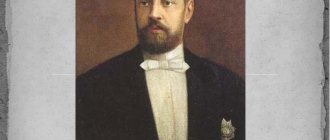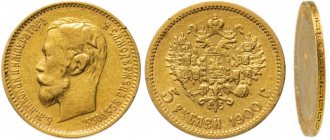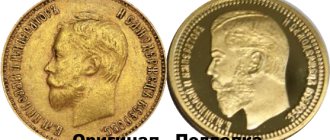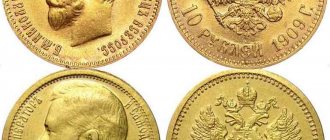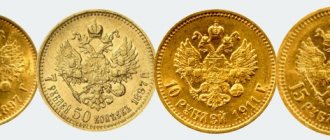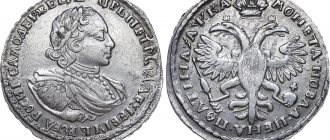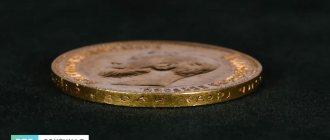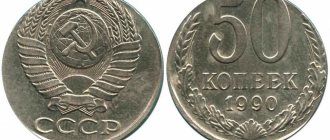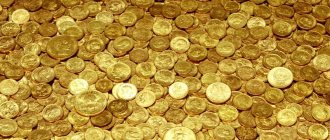Greetings to everyone who is partial to rare coins. My review today is dedicated to the golden chervonets. The copy is not unique - for 10 rubles from 1899 (gold), the price today is slightly more than the cost of the precious metal from which it was minted. And, nevertheless, Nikolaev banknotes, and not only made of gold, have been attracting the interest of collectors who are passionate about numismatics for many decades, due to their beauty and high quality of design.
History of appearance
Nicholas II ascended the throne when the country was not in the most favorable position. The previous Minister of Finance, Vyshnegradsky, contributed to the artificial increase in the exchange rate of the ruble, which can rightly be called financial fraud. As a result, the inflated money bubble began to deflate, and the national currency began to depreciate.
The financial system was in dire need of overhaul.
The new minister, Sergei Witte, proposed transferring the state to the gold standard, simultaneously bringing all current prices into line with the real value. The reform was carried out secretly, the royal ruble of gold “lost” by a third. At the same time, it was nominally possible to maintain the same prices, strengthen the exchange rate of the national currency and attract foreign capital to the country.
The production of gold money began. Paper notes, which the predecessor of Nicholas II sought to popularize, were freely and without restrictions exchanged for gold.
In 1899, the largest circulation of monetary units with a face value of 10 rubles was noted. from gold throughout the history of their existence.
Coin characteristics
| Denomination | Ten rubles |
| Size | 2.25 cm |
| Material | Gold |
| Try | 900 |
| Circulation, pieces (AG, EB, FZ) | 27600013 |
| Date of issue | 1899 |
| Date of withdrawal/withdrawal | 1915 |
| Emission center and country of issue | Russian empire |
| Mint | SPB (St. Petersburg Mint) |
| Designation according to the Bitkin catalog | № 4; № 5; № 6 |
Gold Nicholas coins of 1899
In the penultimate year of the 19th century, several important events took place at the St. Petersburg Mint: people in the positions of the capital's mintmaster were changed twice, and huge quantities of gold rubles were issued (5 rubles - more than 20 million units, 10 rubles - over 27 million copies). The change of initials led to the emergence of several varieties.
Mintzmeister Apollo Grashof, a Russified German from an old noble family, ended a long career and retired with the high rank of full state councilor. For a short time he was replaced by Elikum Babayants, who soon lost his position to Felix Zaleman (1899-1901). True, the official of Armenian origin still had the opportunity to mint his initials on rubles when he returned to the post of manager of coin redistribution (1906-1913). Later he headed the mint (since 1916). Revolutionary events dramatically changed his life, forcing him to emigrate to France, where his trace was lost after 1933, which is strange, because Babayants was a famous person, especially in Armenian circles.
Apparently, the 5 ruble coins were not put into production at the very beginning of 1899 - we will not find Grashof’s name on them. Initially, the initials “EB” were stamped on the edge, which belonged to a man who took such a high and responsible position at only 32 years old. Let us pay attention to the imperial profile: the place on the obverse is occupied by a “large portrait”, which allows one to clearly distinguish individual strands in the hairstyle and beard of Nicholas II. To this option I.I. Rylov and A.I. Fedorin add a five-ruble note of Soviet coinage with a late portrait of the 1903-1911 model.
On the reverse side is the Small Coat of Arms of the Russian Empire - a double-headed eagle with all the official regalia. It is curious that on its wings are depicted the heraldic shields of the most important provinces, including the Grand Duchy of Finland. The latter was once granted wide liberties: its own currency (Finnish mark), widespread use of the local language, etc. And although Nicholas II, according to his father’s behests, tried to attach a special province to the empire as tightly as possible, the connection between Russia and Finland remained weak until the very end.
5 rubles (EB)
- Weight: 4.3 g;
- Diameter: 18.5 mm;
- Edge: patterned, inscription “EB”.
Then Felix Zaleman took over the position of mintzmeister. Not much is known about this man. The appointment did not affect the characteristics of the five-ruble note (this also applies to the portrait of the emperor): only among the edge patterns was now “FZ” listed.
5 rubles (FZ)
- Weight: 4.3 g;
- Diameter: 18.5 mm;
- Edge: patterned, inscription “FZ”.
Gold five-ruble notes without edge decoration are known with this date. Most likely, this is an ordinary manufacturing defect, when for some reason the coins never made it to the gurtile machine. Their small number also speaks in favor of this hypothesis.
Throughout 1899, 10 ruble coins changed only the initials on the edge: “A•G”, “E•B” and “F•Z” successively replaced each other. The same type of portrait of Nicholas II was used, the location of the short title remained unchanged. Its last three letters (“...OSS.”) are placed equally in relation to the cut of the emperor’s neck. Something else is much more interesting: in 1925, batches of gold Nicholas coins were minted in the Soviet Union for foreign trade transactions, including the 10 ruble denomination for 1899. You can distinguish the original 10 rubles of 1899 (the Grashof period) from the remake of the early USSR by the initials of the mintzmeister on the edge. In the Soviet version, the brackets are spaced wider, and the letters have noticeable differences: “A” is wider, “G” is imprinted in the shape of a “gallows”. With the “gallows” there are coins on the obverse of which there is a portrait of a “small head” coupled with a wide outer edging, and coins whose obverse has a portrait of the 1900-1911 model.
10 rubles (A•G)
10 rubles (E•B)
10 rubles (F•Z)
- Weight: 8.6 g;
- Diameter: 22.5 mm;
- Edge: “PURE GOLD 1 ZOLOTNIK 78.24 SHARES”, initials “A•G”, “E•B” or “F•Z” depending on the variety.
Comparison of herds
Appearance and Design
Development of stamps for the production of all gold coins, including for 10 rubles. 1899, studied by A. Vasyutinsky. With the exception of minor features, all gold banknotes were minted according to a single pattern.
Obverse
On the front side there is a profile portrait image of Emperor Nicholas II framed by the title. It is designed in the form of hemispherical inscriptions on the sides of the portrait.
Reverse
The reverse side of the gold 1899 issue is decorated with the emblem of the empire, made in the traditional manner: a double-headed eagle under the shadow of three crowns and a St. George ribbon, on the outstretched wings of which the heraldic symbols of the eight kingdoms controlled by the empire are engraved.
edge
As a protection against fraud, on the edge of 10 rubles of 1899 there is an inscription stamped: pure gold 1 spool 78.27 shares and mintsmaster initials (AG, EB, FZ).
Secrets of the Mint
It would seem that more than a century has passed since the gold Nikolaev tens stopped minting. But for some reason the secrets associated with them are becoming more and more numerous. Therefore, collecting gold coins of the royal issue is not only a reliable investment, but also an activity akin to unraveling a detective story.
For example, they may sell you a copy. Not a fake, not a counterfeit, but a copy made of gold of the same 900 standard. If the copy is cast, then a trained eye can distinguish it by the characteristic features of casting on the stamp field of the coin. In addition, there is a deviation in weight (can be either up or down). Collectors have a negative attitude towards such coins and recommend that they give no more than the price of the metal for them. Very often there are discrepancies not only in weight, but also in the signs of the mintzmeister. There is a known coin of 10 rubles from 1899, on the edge of which is written AR. Of course, Alexander Redko’s initials could not have appeared on coins two years before his appointment as mintzmeister. In addition, the owner of the coin immediately noticed that the coin had not been given any metal (its weight was eight grams).
Information about the additional minting of tsarist gold by the Soviet government in the twenties became widespread. The young Soviet state was forced to buy goods on the international market for gold. But the stockbrokers had no confidence in the newly issued chervonets. Therefore, the royal stamps began to work again. It is assumed that the bulk of the coins are dated 1911, but there are interesting specimens from other years, such as the one presented below.
What makes it different from its brethren? Experts noticed that the portrait of the emperor looks like on coins from the period 1900–1911. Hence the hypothesis was put forward that this was a coinage from the twenties, since in 1899 such an obverse-reverse pair could not be assembled. Serious collectors disagree on whether such coins are considered valid. But novice collectors of royal gold rarely pay attention to such features. In addition, such a ten will obviously not cost less than the gold itself used in making the coin. And gold now has great potential.
Where can you buy or sell
Today, copies of 10 rubles made in gold from 1899 are widely represented at various auctions. Experienced numismatists recommend giving preference to auction houses. They engage expert appraisers, offer the best prices and have a wide audience through online bidding.
The most famous Russian houses today: Assumption Club (bank25.ru), Volmar, Raritetus, Alexander.
You can sell 10 rubles from 1899 day-to-day only at the Assumption Club.
Foreign auctions: Felzman Auction House, Westfälische Auktions, Heritage Auction Galleries.
If you have an old gold coin, but you don’t know how much it costs and what value it represents, then you can order a free assessment of the rarity using a photo by contacting one of the above auction houses.
Price table depending on condition
The table is compiled as a mathematical average of the number and average price of passages at auctions today, taking into account recent years.
| Condition/Variety | VF | XF | AU | UNC | Proof |
| 10 rubles 1899, AG | 23 840 | 27 131 | 26 273 | 31 761 | 182 594 |
| 10 rubles 1899, EB | 17 638 | 25 395 | 29 424 | 29 793 | — |
| 10 rubles 1899, Federal Law | 26 055 | 26 948 | 25 589 | 33 189 | — |
The gold coin price is calculated according to the current rate per gram. Sample weight: 8.6 grams.
What is the price of the golden chervonets of Nicholas II?
The cost of 10 rubles of Nicholas 2 is directly related to the price of gold on the commodity exchange and for coins minted in the years with the largest circulations and average condition from F (fine) to Au (about uncirculated), the relationship is direct and linear, the more expensive the gold on the exchange, the more expensive the cost of a chervonets with an addition (premium) to the cost of approximately 1 to 5% (depending on other poorly predictable factors such as the balance of supply and demand) to the price of exchange gold. Therefore, the cost of 10 gold rubles of Nicholas 2 in average condition and a “simple” (large circulation) year * can always be determined using the following formula: (gold price per gram on the exchange) * 0.9 (this is the fineness coefficient of the metal in the coin, our 900 fineness )*8.6 (this is the weight of our copy) + 1-5% (numismatic increase, since we are still talking about a coin, albeit of average condition and a huge circulation)*8.6 (this is the weight of our gold chervonets) = the cost of our golden chervonets
*valid for circulations of 1899,1900,1901,1902 with rare exceptions within the framework of rare varieties of each year
Thus, if you are faced with the task of selling Nicholas’s golden chervonets, then you can rely on this simple calculation. Let me remind you: this is the minimum price for a Nikolaev chervonets in average condition and the simplest in circulation (1899,1900,1901,1902). All other years and conditions above AU (about uncirculated) will be at a premium to the indicated price. What could be the increase? This is a question that requires a substantive consideration of each specific instance and the experience of an expert’s assessment. If the task arises of buying 10 rubles for Nicholas 2, then the above calculation can also be a guideline, if you add 10 percent to it. As a rule, you can meet this purchase price.
